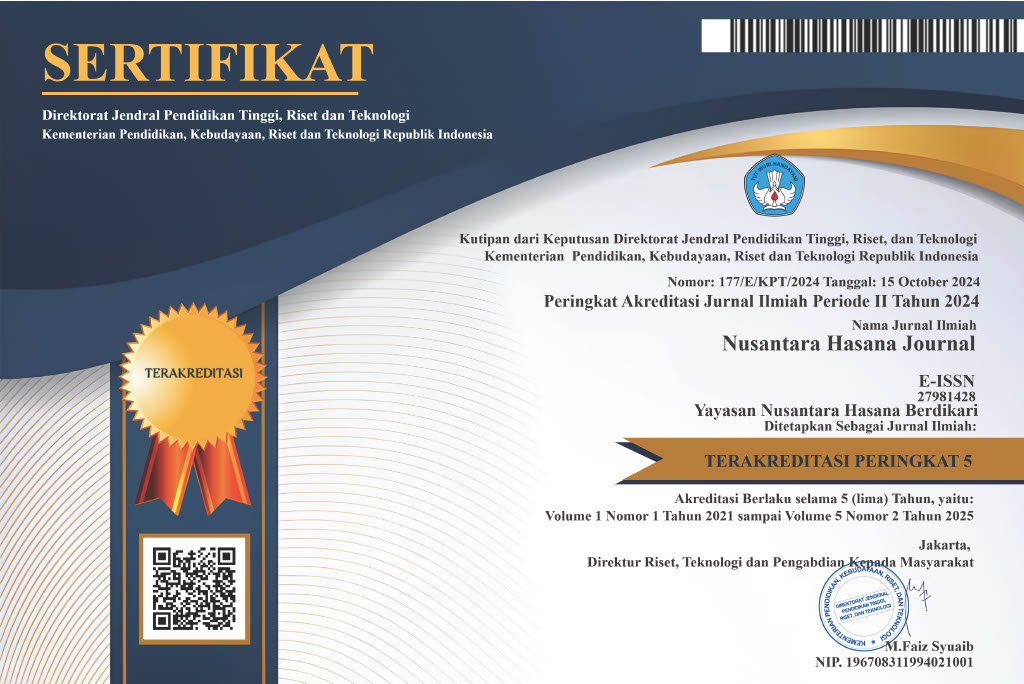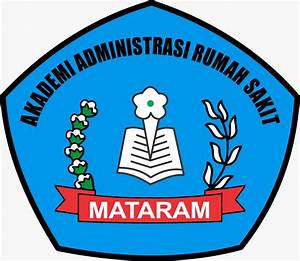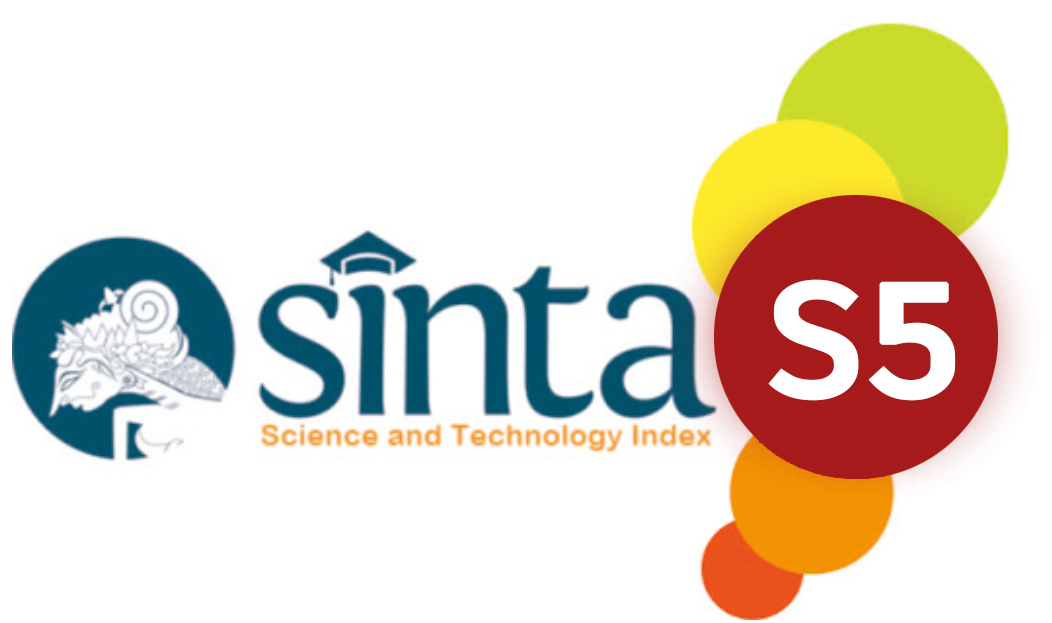AN APPROACH OF ECOLINGUISTIC IN MINYAK KARO BASED ON ETHNOBOTANY
Keywords:
Minyak Karo, Ecolinguistic, EthnobotanyAbstract
This study proved the interrelated concepts of Minyak Karo based on biological, ideological, and sociological dimensions in Padang Bulan and Pancur Batu regency, North Sumatra. This study was in the form of descriptive qualitative study. The results proved that the ingredients to make Minyak Karo were cooking oil, green coconut oil, hundred spices, kaffir lime/kaffir lime leaves, panglai, kencur, shallots, garlic, pepper, nutmeg, nest wallet, ship leaves, jambar api, tawan gegeh, fresh ipuh, bulung patchouli , gagaten tiger, root areca nut, root riman, root bamboo, reeds, root pengkih, root palm, basil, tawan gegeh, turmeric and areca nut. The plant parts used in traditional medicine of Minyak Karo were leaf, root, rhizome, flower, stem, fruit, bark, seed, tuber, and latex in biological dimension. In ideological dimensions, Minyak Karo had the content of chant to invite the spirits of the ancestors. Based on sociological dimension, the purpose of the ritual of making Minyak Karo was to cure diseases that were believed to come from supernatural spirits or diseases sent by people through supernatural means and asked for protection from the spirits of the ancestors.
Downloads
References
Anderson, E. N. (2002). Biodiversity conservation: A new view from mexico. In: Stepp, J.R., Wyndham, F. S., & Zarger, R. K. (eds.). Ethnobiology and cultural diversity: The international society of ethnobiology. Athens: Georgia.
Anderson, E. N., Pearsall, D., & Hunn, E. (2012). Ethnobiology. New York: Wiley-Blackwell.
Barus, L. P. B. (2015). Ritual pembuatan minyak urut karo di desa jumapadang kecamatan barusjahe kabupaten karo. Buddayah: Jurnal Pendidikan Antropologi, 1(2), 176-179.
Berlin, B. (1992). Ethnobiological classification: Principles of categorization of plants and animals in traditional societies. New Jersey: Princeton University Press.
Chawla, S. (2001). Linguistic and philosophical roots of our environmental crisis. In: Fill, A., & Muhlhausler, P. (eds), The ecolinguistics reader: Language ecology and the environment. London: Continuum.
Cotton, C. M. (1996). Ethnobotany: Principles and applications. New York: John Wiley & Sons.
Cowley, S. J. (2013). Ecolinguistic terrain: Language and the bio-ecology. Denmark: University of Southern Denmark.
Crystal, D. (2000). Language death. Cambridge: Cambridge University Press.
Cunningham, A. B. (2001). Applied ethnobotany: People, wild plant use, and conservation. London: Routledge.
Dasmann, R. (1964) Environmental conservation. London: Wiley.
Fill, A., & Muhlhausler, P. (2001). The ecolinguistics reader, language, ecology, and environment. In Language and Communication Journal, 24(2), 183-205.
Florey M. J., & Wolff X. Y. (1998). Incantations and herbal medicines: Alone ethnomedicinal knowledge in a context of change. Journal of Ethnobiology 18(1), 39-67.
Foster G. M. (1976). Disease etiologies in non-western medical systems. American Anthropologist 78(1), 773-782. http://dx.doi.org/10.1525/aa.1976.78.4.02a00030
Garner, M. (2004). Language: An ecological view. Oxford: Oxford University.
Halliday, M. A. K. (2001). New ways of meaning: The challenge to applied linguistic. In: Fill, A., & Muhlhausler, P. (eds), The ecolinguistics reader: Language ecology and the environment. London: Continuum.
Harnendaz, F. J. R. (2011). The contemporary theory of metaphor: Myths, developments and challenges. Metaphor and Symbol, 26(3), 161-185. https://doi.org/10.1080/10926488.2011.583189
Haugen, E. (1972). The ecology of language. Stanford: Stanford University Press.
Hogan-Brun, G., & O’Rourke B. (2018). The Palgrave Handbook of Minority Languages and Communities. United Kingdom: Palgrave Macmillan.
Hozl, A. (2018). A typology of questions in northeast asia and beyond: An ecological perspective. Berlin: Language Science Press.
Jensen, D. (2006). Metaphors as a bridge to understanding educational and social contexts. International Journal of Qualitative Methods, 5(1), 36-54. https://doi.org/10.1177/160940690600500104
Ji, Y. (2020). Metaphoric representation of nature. United Kingdom: Francis Academic Press. https://doi.org/10.25236/soshu.2020.074
Karo Regency Statistical Bureau. (2012). Karo in figures 2012. Kabanjahe, North Sumatra: Statistics Agency of Karo Regency.
Keulartz, J. (2007). Using metaphors in restoring nature. Nature and Culture, 2(1), 27–48.
Khotimah, K., Laksono, K., Suhartono, Pairin, U., & Darni (2021). Lingual expressions in the covid-19 related ecolexicons in indonesian online media coverage. Journal of Language and Linguistic Studies, 17(1), 309-326.
Konvecses, Z. (2010). Metaphor: A practical introduction. Oxford: Oxford University.
Krementsov, N. L., & Todes, D. P. (1991). On metaphors, animals, and us. Journal of Social Issues, 47(3), 67–81. https://doi.org/10.1111/j.1540-4560.1991.tb01823.x
Lakoff, G., & Johnson, M. (1980). Metaphors we live by. Chicago: University of Chicago.
Lakoff, G., & Johnson, M. (2008). Metaphors we live by. Chicago: University of Chicago.
Lutony, T. L., & Rahmayati, Y. (2002). Produksi dan perdagangan minyak atsiri. Jakarta: Penebar Swadaya.
Maffi, L. (2005). Linguistic, cultural, and biological diversity. Annual Review of Anthropology, 34(1), 599–617. https://doi.org/10.1146/annurev.anthro.34.081804.120437
Maffi, L., & Woodley, E. (2012). Biocultural diversity conservation: A global sourcebook. Oxon: Earthscan.
Malihah, E., Aryanti, T., Adriany, V., Yulindrasari, Izharuddin, A. (2019). Research for social justice. United Kingdom: Taylor and Francis Group.
McMillen, H. (2012). Ethnobotanical knowledge transmission and evolution: The case of medicinal markets in tanga, tanzania. Economy Botany, 66(1), 121–131. http://dx.doi.org/10.1007/s12231-012-9201-8
Minnis, P. E. (2000). Ethnobotany: A reader. Norman: University of Oklahoma.
Muhlhausler, P. (2003). Language of environment: A course in ecolinguistics. London: Battlebridge.
Nabhan, G. (1997). Cultures of habitat: On culture, nature, and story. Washington: Counterpoint.
Nash, J. (2013). Insular toponymies: Place-naming on norfolk island, south pacific and dudley peninsula, kangaroo island. Amsterdam: John Benjamins Publishing Company.
Nasution, J., Suharyanto, A., & Dasopang, E. S. (2020). Study ethnobotany of minyak karo. Budapest International Research in Exact Sciences Journal, 2(1), 96-100. https://doi.org/10.33258/birex.v2i1.740
North Sumatra Statistical Bureau. (2012). North sumatra in figure 2011. Medan: North Sumatra Statistical Bureau.
Nyamweru, C., Kibet, S., Pakia, M. & Cooke, J. A. (2008). The kaya forests of coastal kenya ‘remnant patches’ or dynamic entities? In: Sheridan, M. J., & Nyamweru (eds.). African sacred groves: Ecological dynamics and social change. London: Ohio University Press.
Pandapotan, S., Khairat, & Syahril. (2018). Inventarisasi kearifan lokal etnis karo dalam pemanfaatan etnobotani di kabupaten karo. Journal of Education, Humaniora and Social Sciences (JEHSS), 1(1), 43-50.
Porter, S., & O’Donnell, M. (2014). Biblical and Ancient Greek Linguistics. New York: Wipf and Stock Publisher.
Pupavac, V. (2012). Ecolinguistics and post-humanist advocacy. In: Language rights: Studies in minority languages and communities. London: Macmillan. https://doi.org/10.1057/9781137284044_
Radzi, S. M., Hanafiah, M. H., Sumarjan, N., Mohi ,Z., Sukyadi, D., Suryadi, K., Purnawarman. (2016). Heritage, culture and society: Research agenda and best practices in the hospitality and tourism industry. United Kingdom: CRC Press.
Raymond, C., Singh, G., Benessaiah, K., Bernhardt, J., Levine, J., Nelson, H., Turner, N., Norton, B., Tam, J. and Chan, K. (2013). Ecosystem services and beyond: using multiple metaphors to understand human–environment relationships. BioScience, 63(7), 536-546. https://doi.org/10.1525/bio.2013.63.7.7
Retnowati, E., Ghufron, A., Marzuki, Kasiyan, Pierawan, & Ashadi (2018). Character education for 21st century global citizens. United Kingdom: Taylor and Francis Group.
Roller, M., & Lavrakas, P. J. (2015). Applied Qualitative Research Design: A Total Quality Framework Approach. New York: Guilford.
Sapir, E. (1912), Language and environment. American Anthropologist, 14(1), 226–242.
Schlee, G. (1992). Ritual topography and ecological use: The gabra of the kenyan/ethiopian borderlands. In: Croll, E., & Parkin (Eds.). Bush base: Forest farm, culture, environment, and development. London and New York: Routledge.
Schultes, R. E., & Raffauf, R. F. (1992). Vine of the soul: Medicine men, their plants, and rituals in the colombian amazonia. Arizona: Synergetic Press.
Situmorang, R., Harianja, A., & Silalahi, J. (2015). Karo’s local wisdom: The use of woody plants for traditional diabetic medicines. Indonesian Journal of Forestry Research, 2(2), 121-131.
Skutnabb-Kangas, Tove, Maffi, L., & Harmon, D. (2003). Sharing a world of difference: The earth’s linguistic, cultural, and biological diversity. New York: UNESCO, WWF, and Terralingua.
Stibbe, A. (2014). Ecolinguistic: Language, ecology, and the stories we live by. Oxon: Routledge.
Suryadarma, I. G. P. (2008). Diktat etnobotani: Jurusan pendidikan biologi fmipa uny. Retrieved from: http://staffnew.uny.ac.id/upload/130530813/pendidikan/DIKTAT+%20ETNOBOTANI.pdf [Accessed: 10 April 2021].
Toledo, V. M. (2013). Indigenous peoples and biodiversity. In: Levin, S. A. (ed.). Encyclopedia of biodiversity. Waltham: Academic Press. Available from: http://www.sciencedirect.com/science/article/pii/B9780123847195002999. [Accessed:10 April 2021].
Tuxil, J. D., Nabhan, G., & Dexler, W. E. (2001). People, plants, and protected areas: A guide to in situ management. United Kingdom: Earthscan Publications.
Verhagen, F. (2008). Worldviews and metaphors in the human-nature relationship: An ecolinguistic exploration through the ages. Available from: http://www.ecoling.net/ [Accessed: 10 April 2021].
Downloads
Published
How to Cite
Issue
Section
License
Copyright (c) 2021 Karisma Erikson Tarigan

This work is licensed under a Creative Commons Attribution-ShareAlike 4.0 International License.
NHJ is licensed under a Creative Commons Attribution-NonCommercial-ShareAlike 4.0 International License.
Articles in this journal are Open Access articles published under the Creative Commons CC BY-NC-SA License This license permits use, distribution and reproduction in any medium for non-commercial purposes only, provided the original work and source is properly cited.
Any derivative of the original must be distributed under the same license as the original.
























